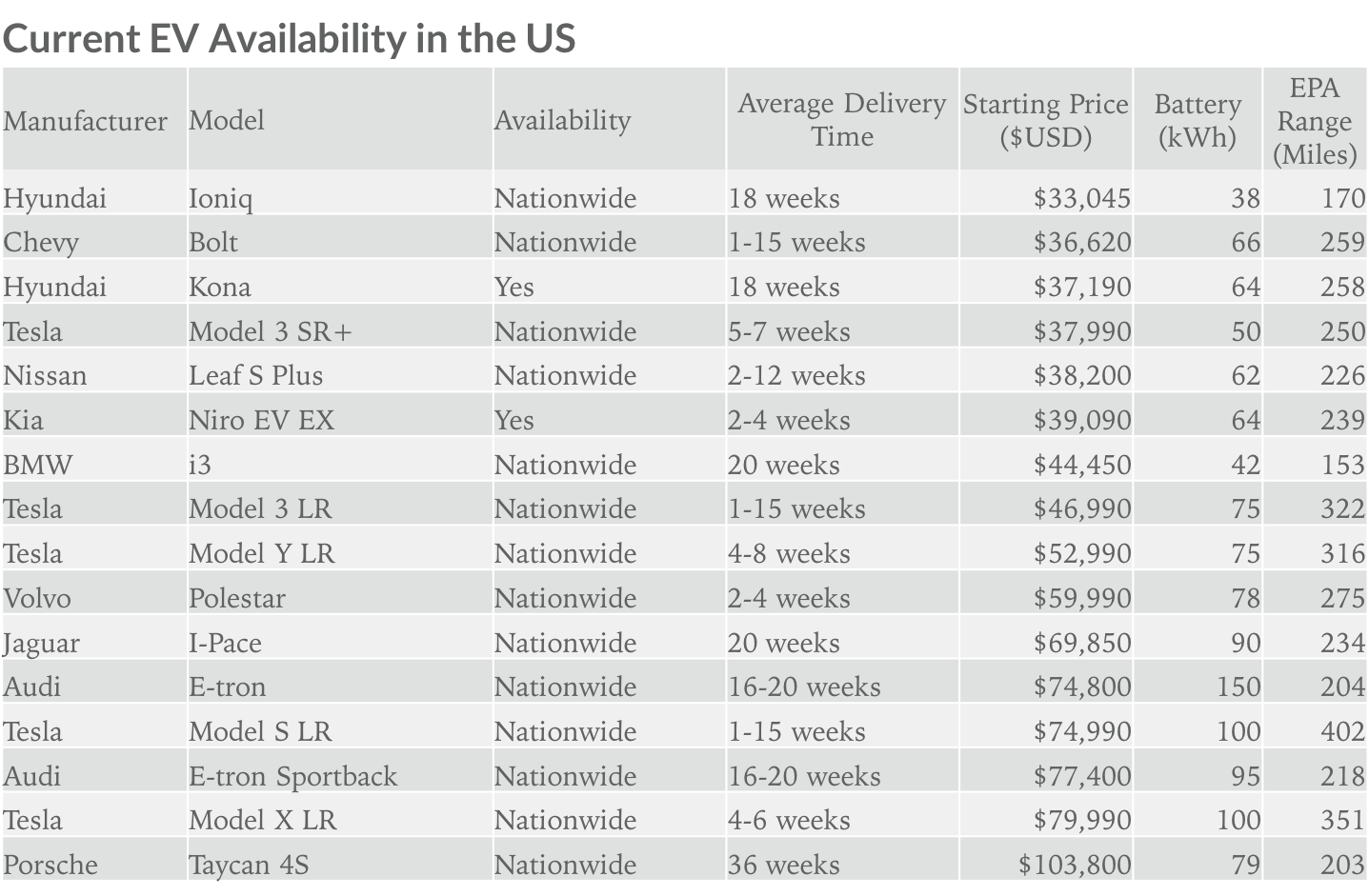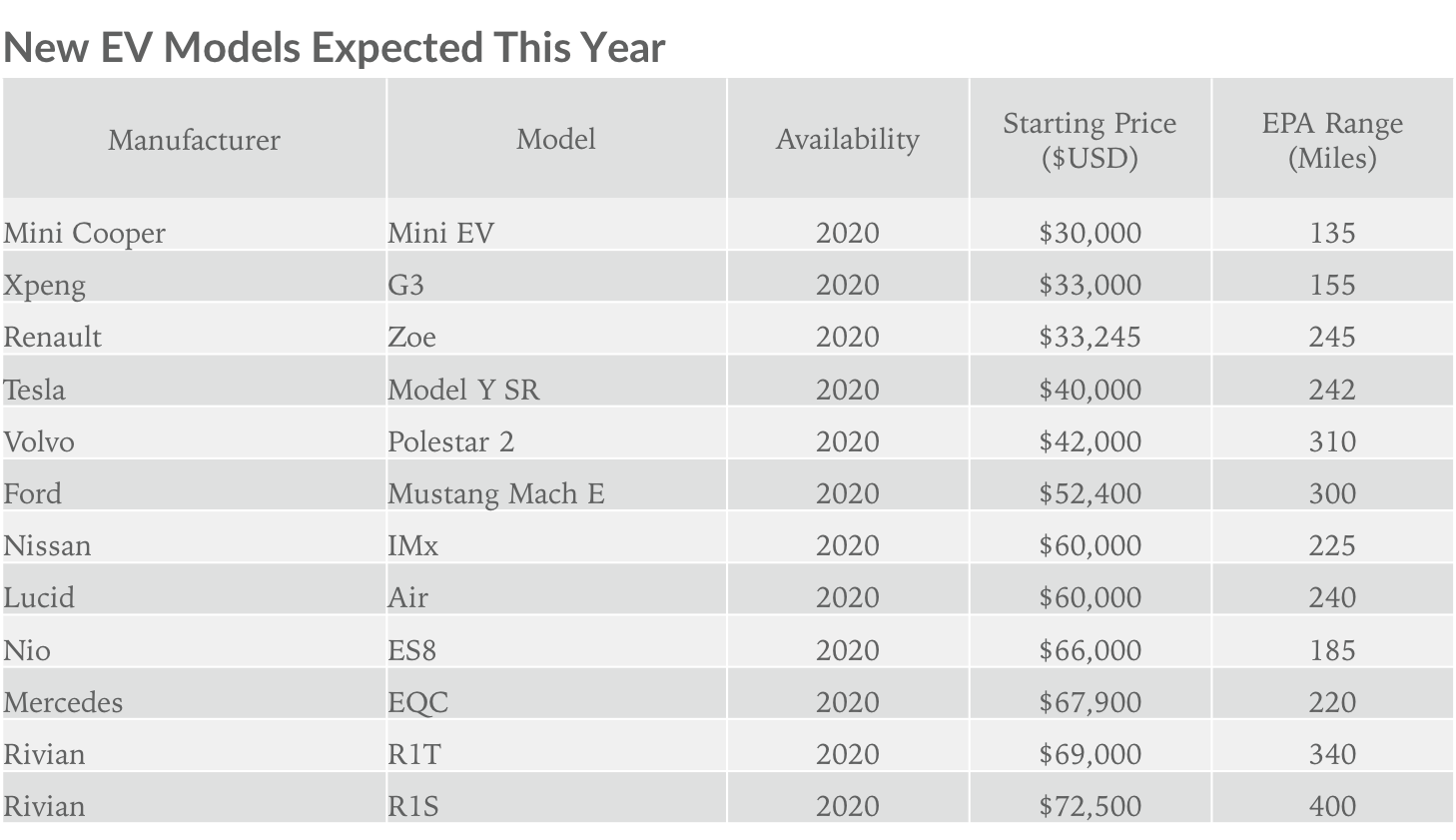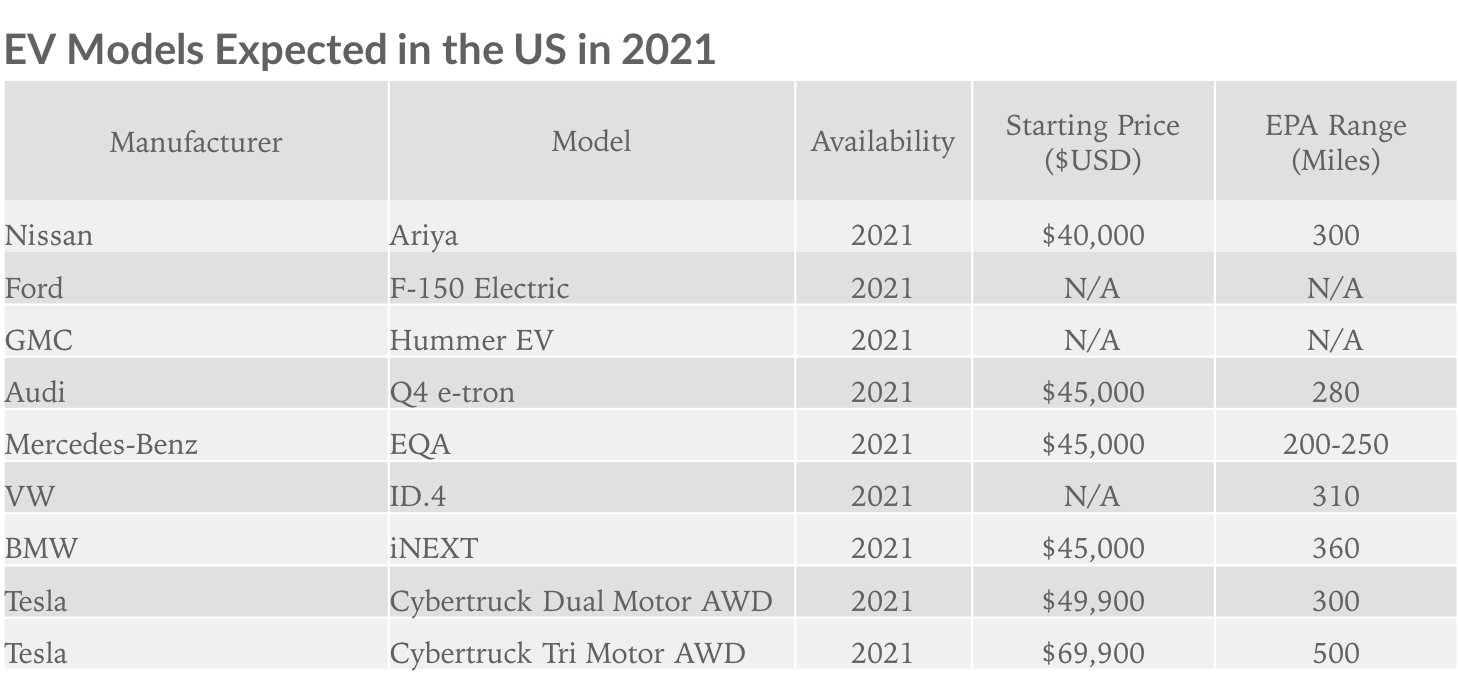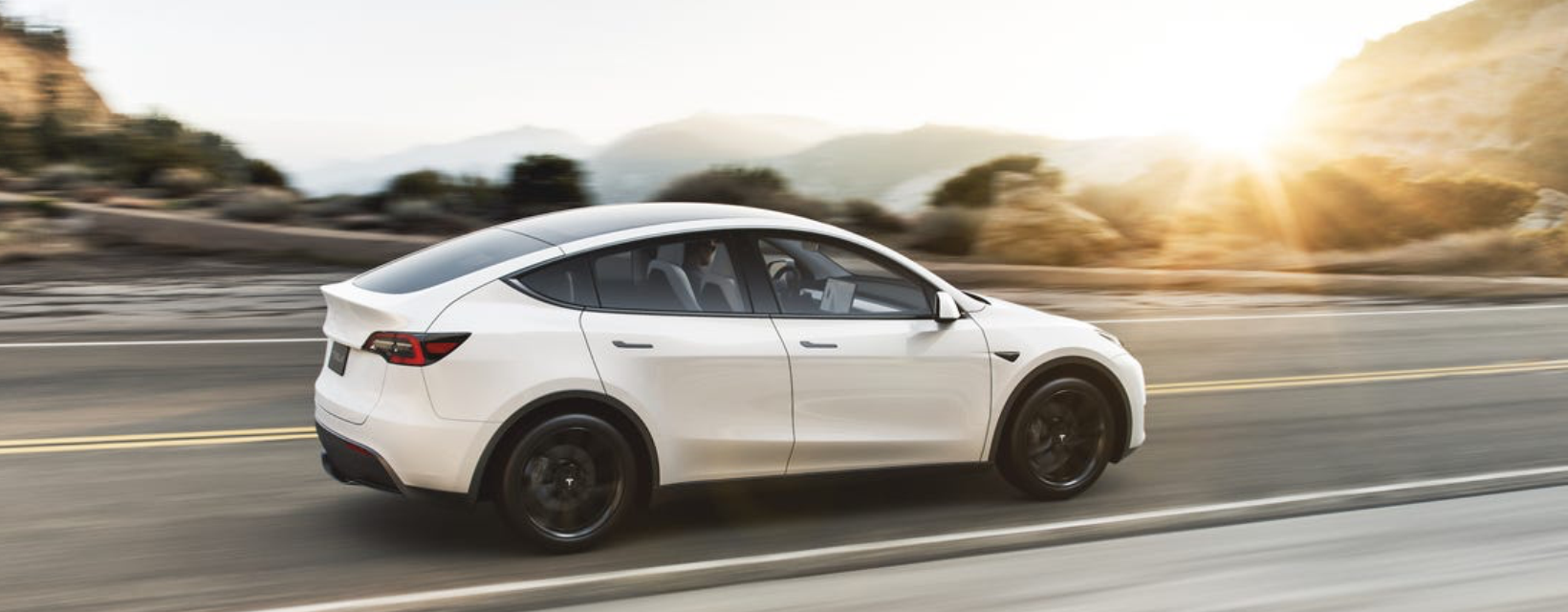Tesla is now the world’s most valuable auto company. With a market cap of $185 billion Tesla edges slightly above Toyota’s $177 billion valuation, based in part on the company’s dominant market share of EVs in the US (about 80%). For the company’s valuation to advance higher it will need to hold off other automakers as they roll out new EVs over the next five years.
Based on the currently available EV models in the US market, along with the models expected to be released next year, we believe Tesla will exit 2021 with a 70-80% market share. If we’re correct, Tesla’s economies of scale will strengthen, making it more difficult for traditional automakers to benefit from the long-term secular shift to electric.
Today’s EVs pose limited threat to Tesla
In 2019, the market was anticipating the release of electric vehicles from the likes of Audi, Jaguar, Fiat, Hyundai, and Honda, which stoked concerns that Tesla’s market share would quickly deteriorate. Over the past year, however, with only three new competitive EVs added to the US market, and other EV Models discontinued like Honda’s Clarity Ev and Chevy Volt, Tesla has maintained its ~80% US EV market share. We took a closer look at what has changed in the EV landscape over the past year and compared available models by price, range, and delivery time.
There are currently 16 EVs available for purchase in the US. By year-end, there could be as many as 12 additional EV models available, which would bring the total number of EVs available in the US to 28.
The majority of these new models suffer from one of two critical flaws: starting prices above $70,000 and/or ranges below 225 miles. These two flaws rule out most EVs as mainstream options. In our view, mainstream options are priced below $40,000 with a range above 225 miles.
When filtering for prices below $40,000 and a range above 225 miles, the list narrows to five options compared to three a year ago. Today, this list includes the Model 3 SR+, Chevy Bolt, Nissan Leaf S Plus, Kia Niro, and Hyundai Kona. Within the group, there’s a wide range of design options, software functionality, and charging network availability. Considering those factors, Model 3 has been a clear winner in terms of value.
Bottom line: competition in 2020 (and likely in 2021) is not a measurable threat to Tesla. The Model 3 is still unchallenged in its EV value proposition and we expect the availability this year of the short-range, $40k Model Y to help further sustain Tesla’s market position.
EV Models Currently Available
Not surprisingly, the US electric vehicle market is growing. In 2016, EVs accounted for less than 0.25% of cars sold, about 3% in 2019, and should be about 5% in 2020. We’re likely 15-25 years away from 100% EV adoption. The table below outlines EV models that are currently available in the US sorted by starting price.

The following table outlines the 12 additional EVs expected by year-end in the US sorted by starting price.

EV Models Expected in the US in 2021
The following table outlines expectations from automakers for 9 new EVs in 2021 sorted by the starting price. This should bring the number of EVs in the US market to 37 by the end of 2021.

Long-Term Market Share Expectations
Tesla’s 8 Year Head Start
Prevailing wisdom contends that OEMs are good at producing cars and that switching the drivetrain to electric will be simple, allowing them to profitably scale EV production and maintain market share. If this is true, it would dramatically lower Tesla’s market share and make the story less compelling overall. We believe Tesla’s 8-year head start sets the company up to control a significant share of the market for a long time. In our view, there are three key benefits from Tesla’s head start:
- 42% more efficient batteries than four other EV manufacturers, adjusting for differences in range evaluation methods
- Simplicity of the Supercharger network compared to generic charging stations
- More advanced self-driving capabilities
